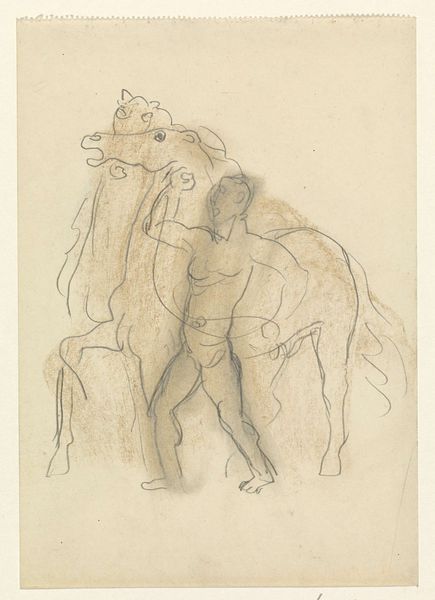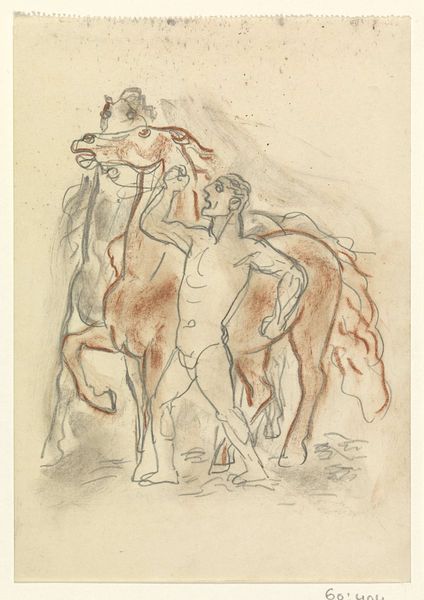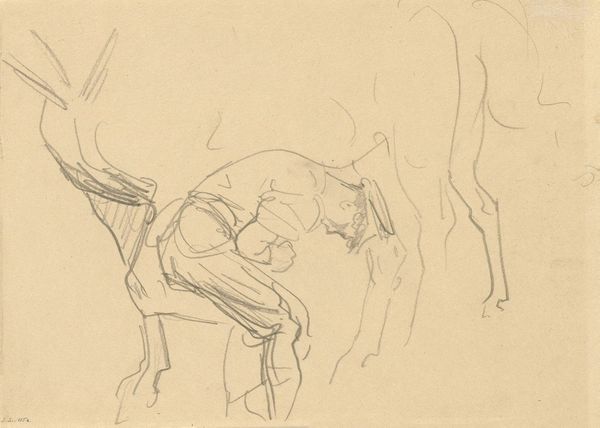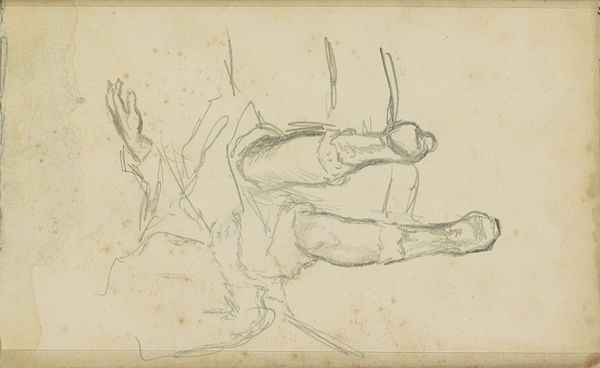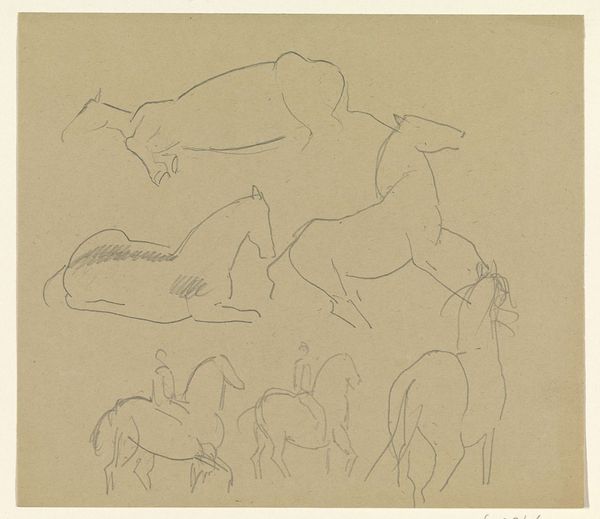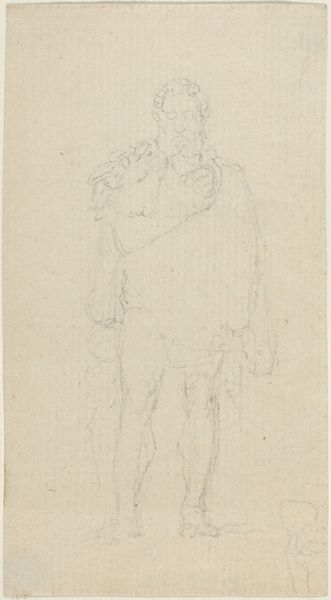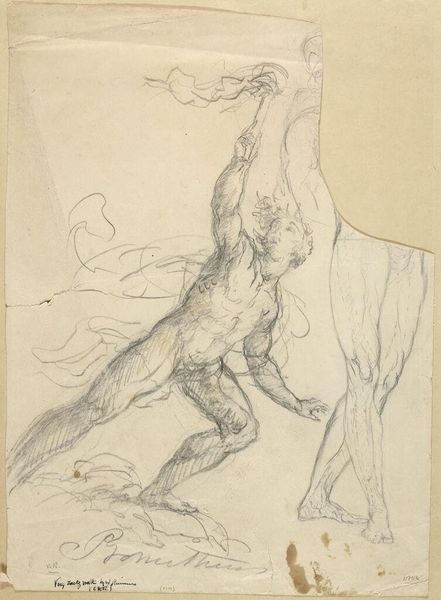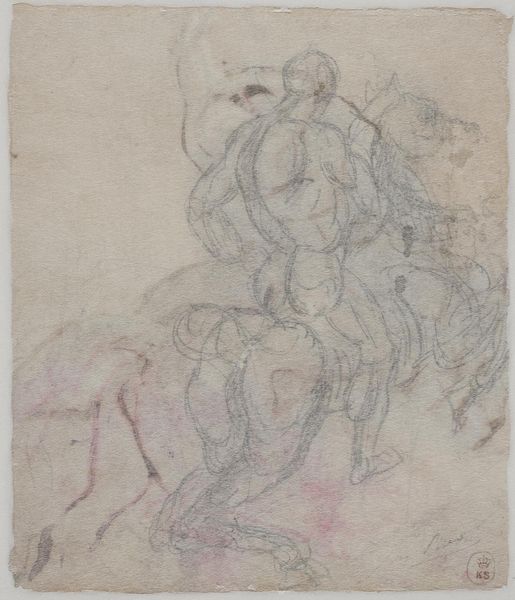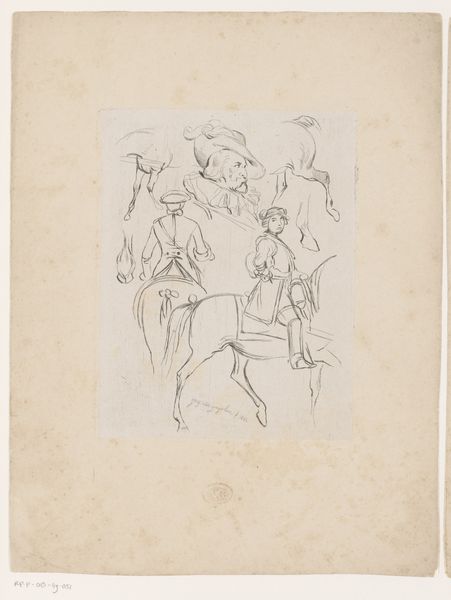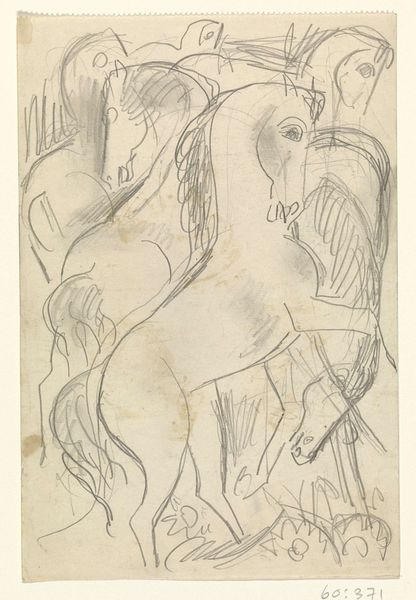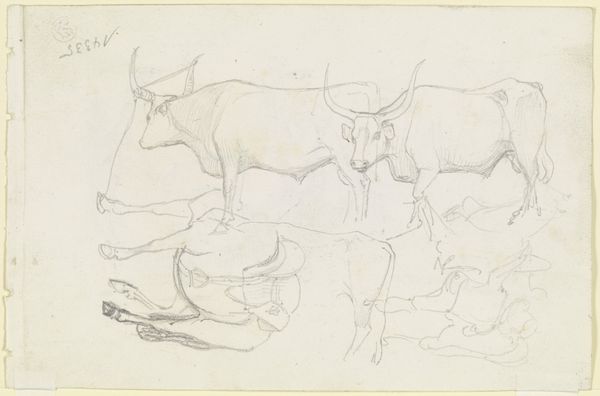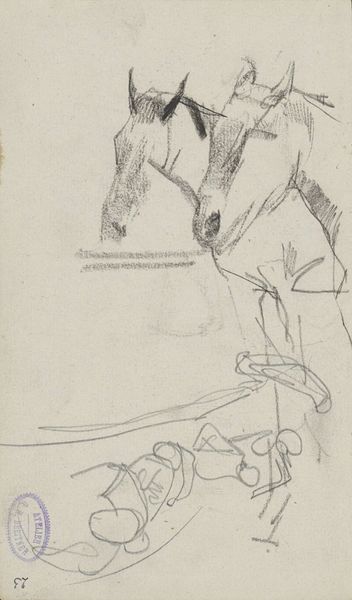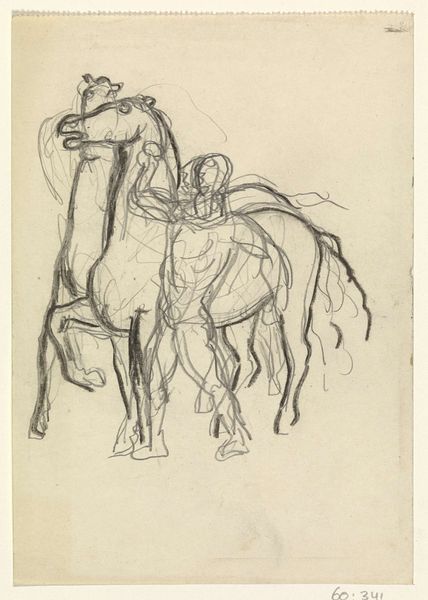
Dimensions: height 195 mm, width 137 mm
Copyright: Rijks Museum: Open Domain
Curator: What a compelling piece. This pencil drawing by Leo Gestel, created sometime between 1891 and 1941, is called "Man Holds Two Horses in Check". It’s currently held here at the Rijksmuseum. Editor: My first impression is one of contained chaos. The energy of the horses versus the imposing, near Herculean figure attempting to restrain them, it's all rather captivating. It projects something so primitive and visceral. Curator: Absolutely. Gestel’s use of line is quite interesting here. The stark, almost fragmented strokes give the work a dynamic, unfinished quality, suggesting movement and tension inherent in the struggle itself. Note, especially, how he uses subtle shading to define form without fully resolving the figures. It almost pushes them out of the picture plane and allows your eye to follow them back into the composition. Editor: And the horses themselves! For centuries, they've been symbolic power, freedom, and untamed nature. The way the artist sketches them—one appears almost wild-eyed—speaks to humanity’s perennial effort to control and harness these forces. One can’t help but ask: what internal forces does this imagery also represent? Curator: An interesting consideration. Gestel also seems to be playing with classical tropes, particularly around depictions of masculinity and heroic struggles. There's this implicit reference to man conquering nature, and even himself through symbolic form of conquest and repression. Editor: Do you think this links back to his place in the Romantic tradition, perhaps? That intense emotionality paired with those rather theatrical poses, I find those difficult to ignore. This, along with the symbolic reading you pointed to regarding conquest is a powerful visual statement in that way. Curator: Perhaps. But consider how the drawing, while figurative, avoids hyperrealism. It focuses on line, balance, and spatial relationships—the pure form of expression. I believe it offers, on one hand, an interesting and intense snapshot into his creative process. Editor: On the other hand, Gestel’s raw expression opens many avenues for personal contemplation. It forces us to recognize universal narratives that have echoed throughout humanity, all conveyed so economically. Curator: Well said. There is, ultimately, no sole interpretation— and that’s perhaps the point, the tension, between form and symbolic expression. Editor: Indeed. This really leaves you pondering the complexity of what we attempt to control versus the essence of the wild within. Thank you for sharing this compelling perspective!
Comments
No comments
Be the first to comment and join the conversation on the ultimate creative platform.
